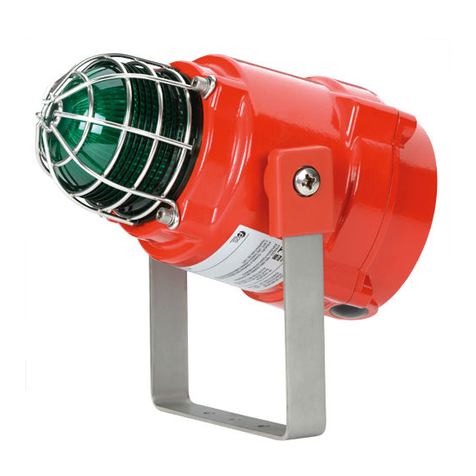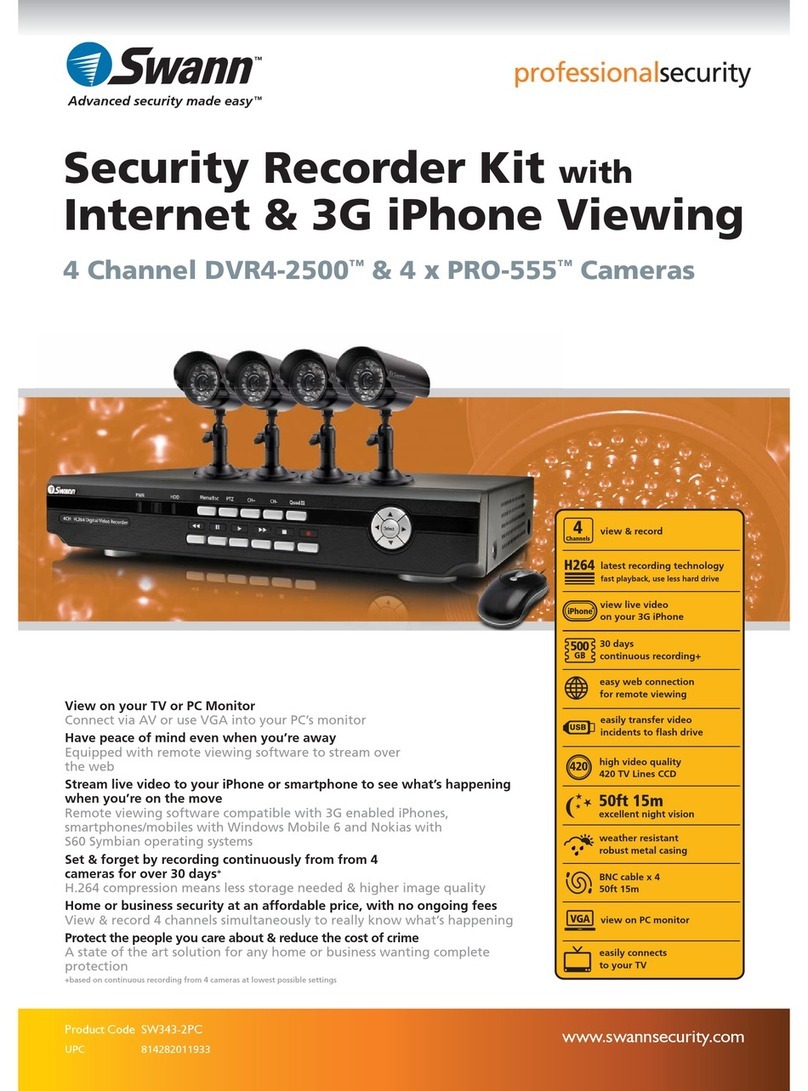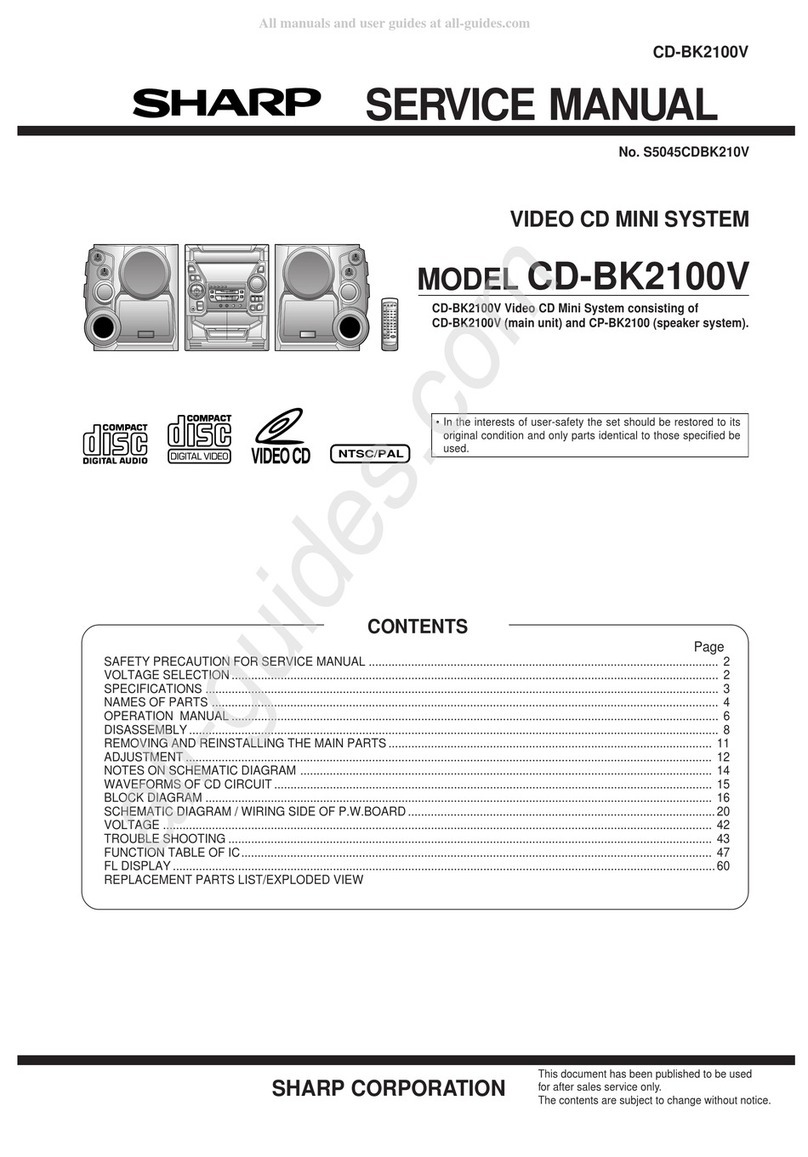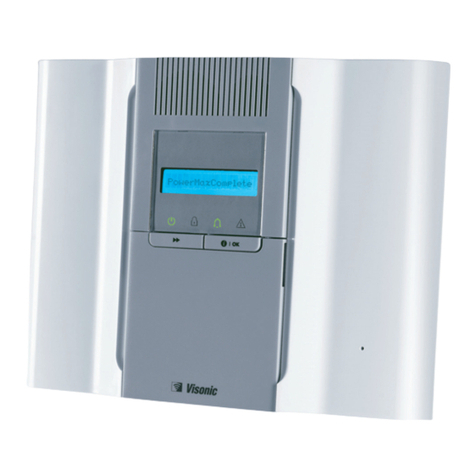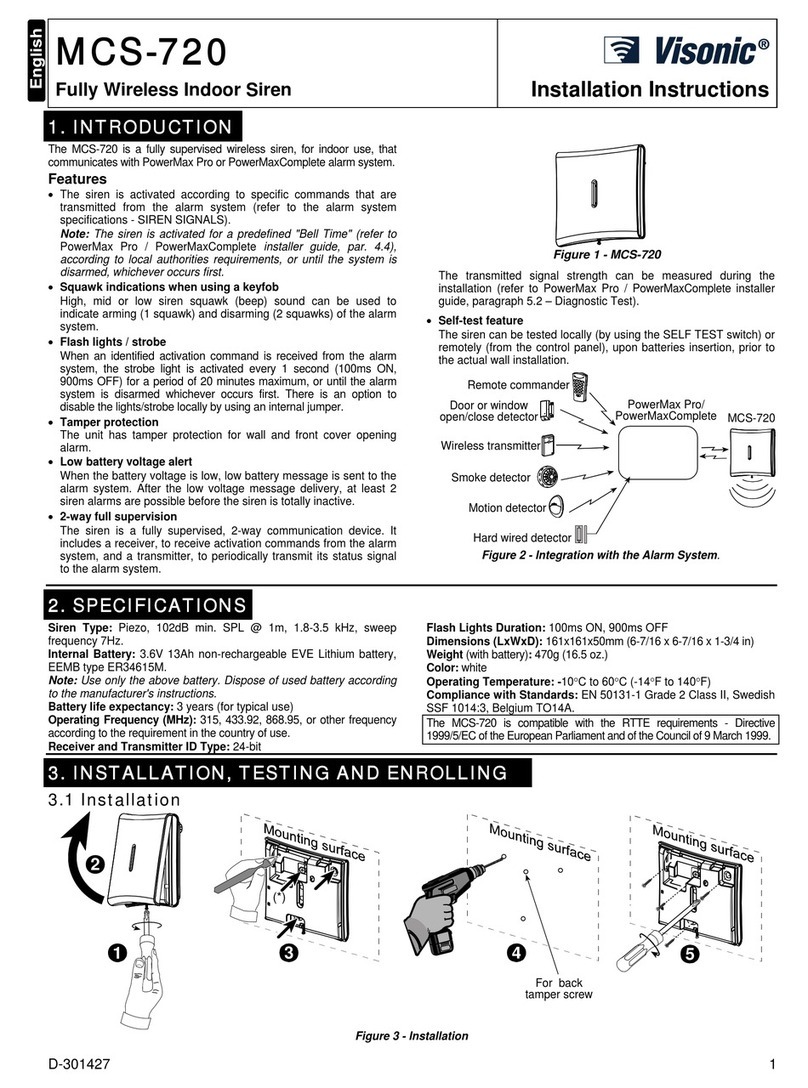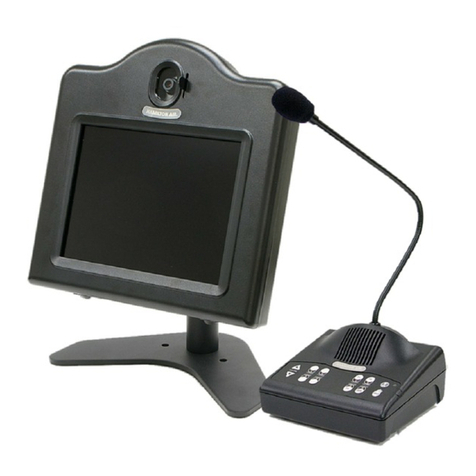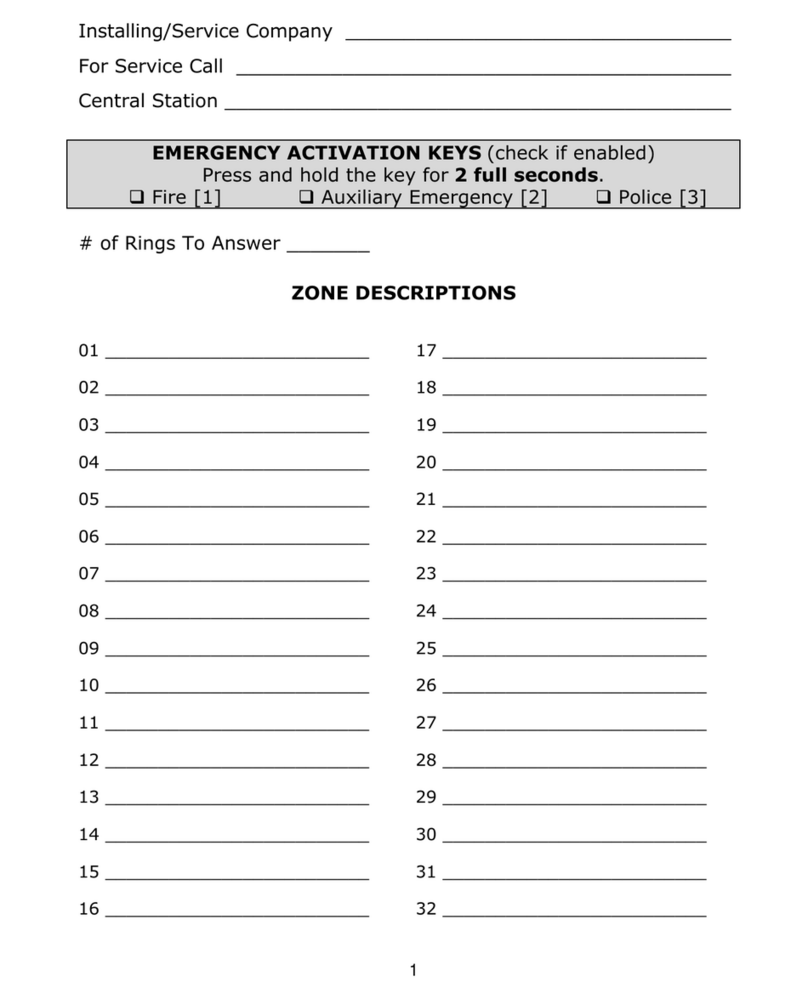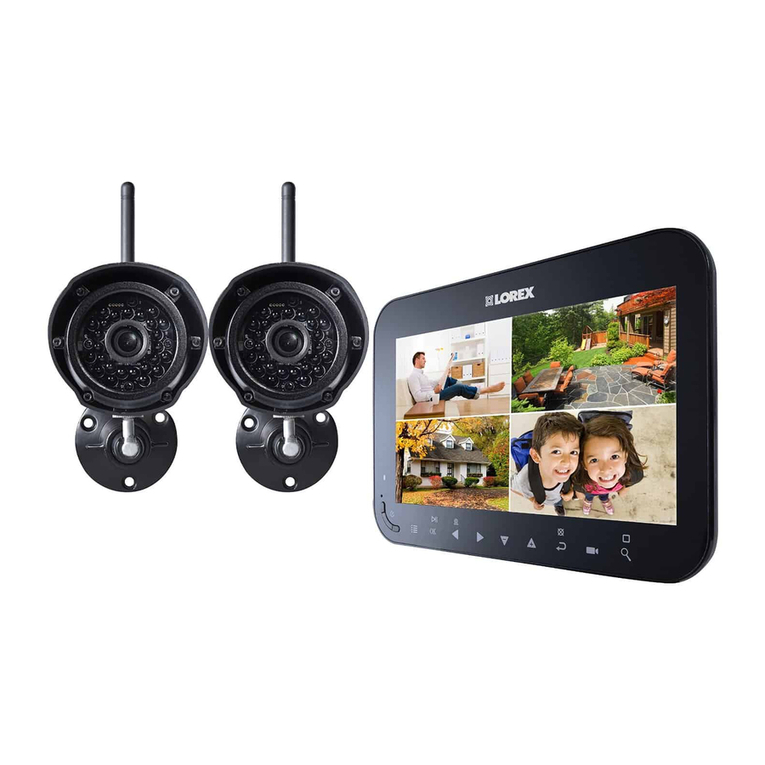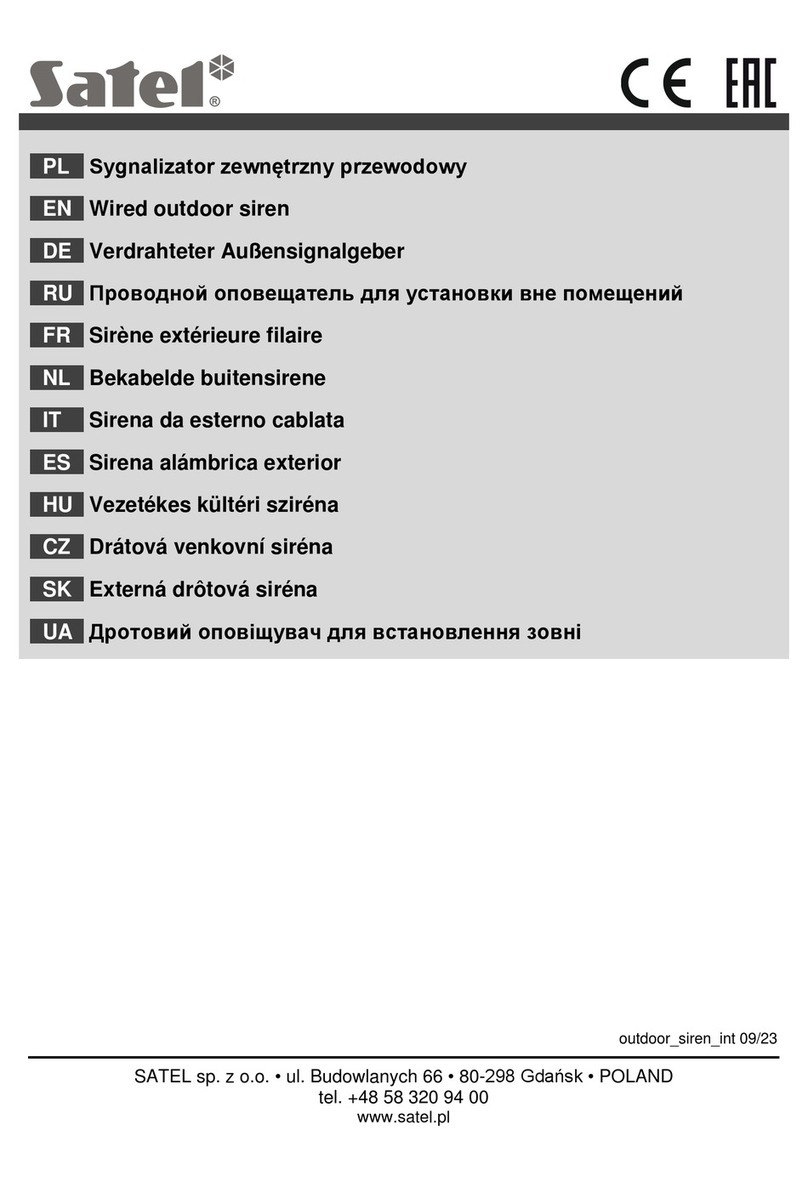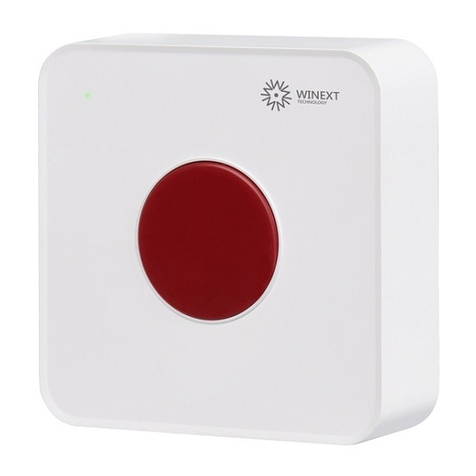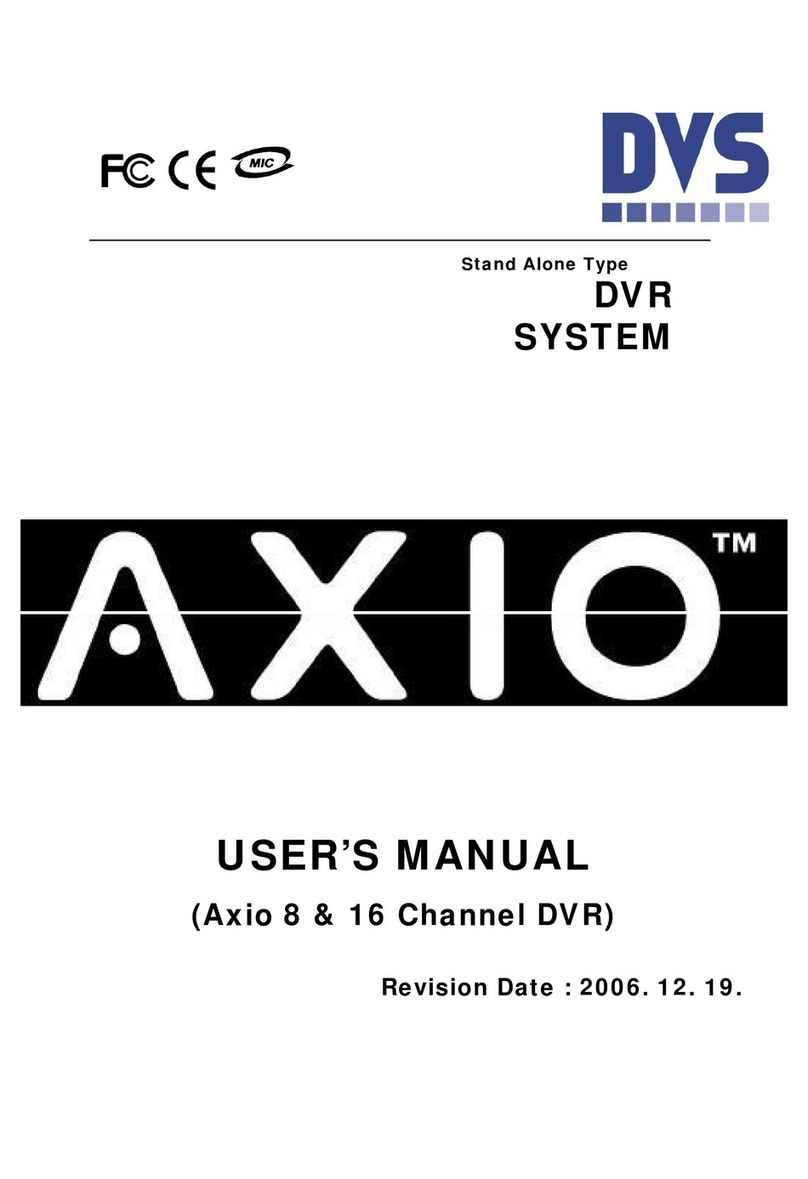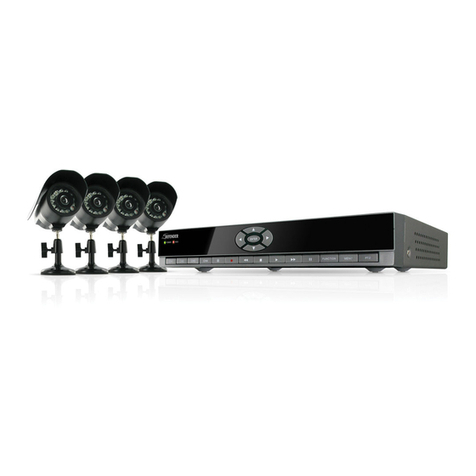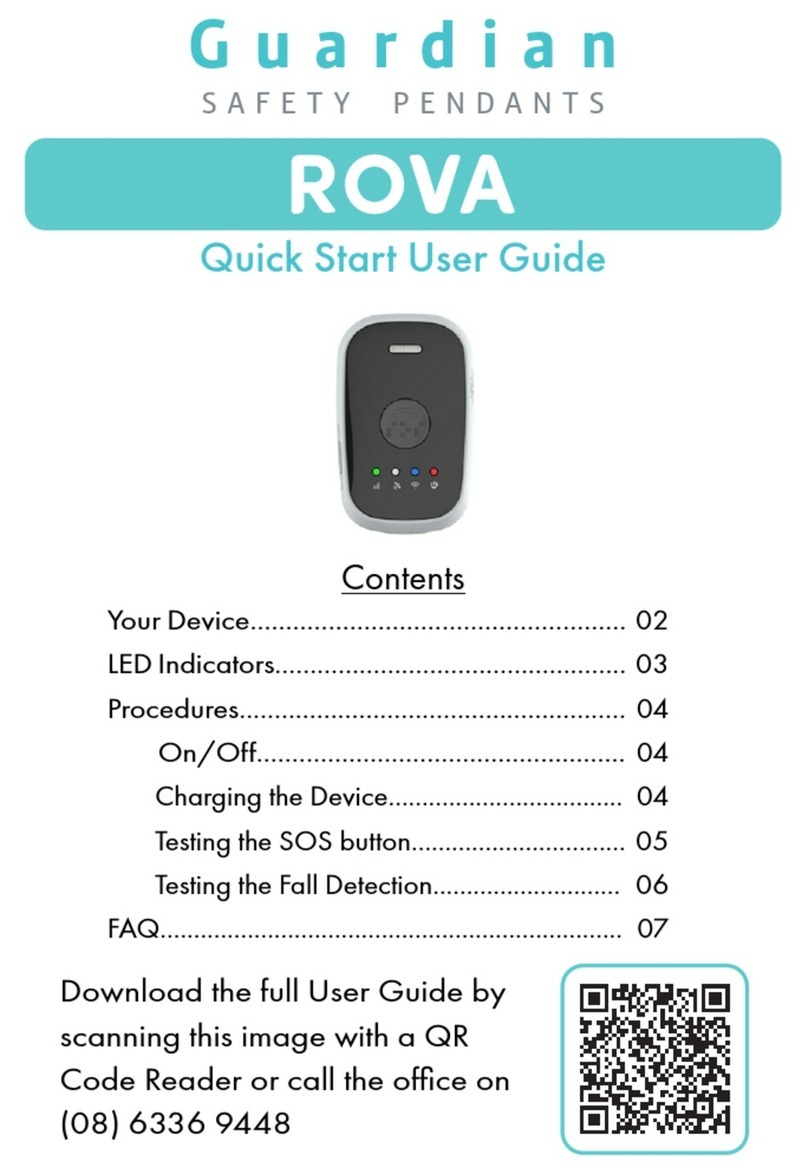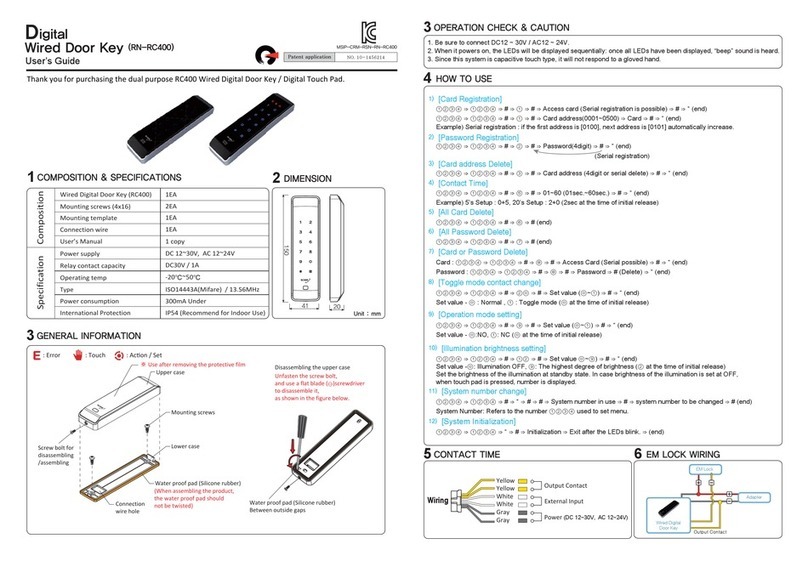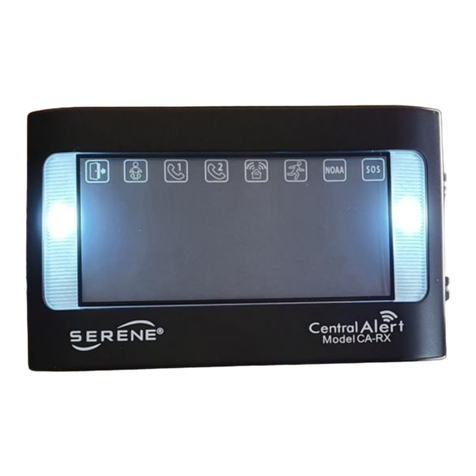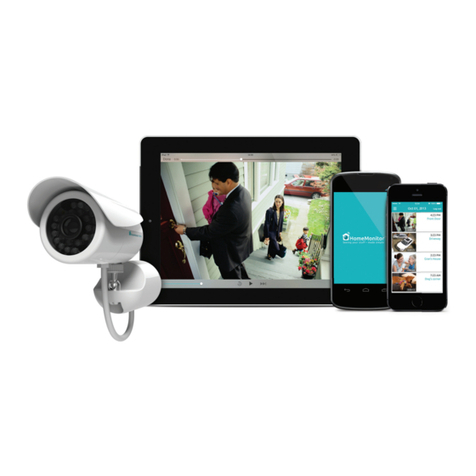E&OE NC910F User manual

10 Zone Call Controller (NC910F, NC910S)
10 Zone Expansion Unit (NC910EF, NC910ES)
20 Zone Call Controller (NC920F, NC920S)
20 Zone Expansion Unit (NC920EF, NC920ES)
10 or 20 Zone Call Controller 10 or 20 Zone Expansion Unit
The 10 and 20 Zone Call Controllers are compatible with all 800 Series call points, ceiling pulls,
infrared ceiling receivers, monitoring points, overdoor lights and remote sounders. Depending
on how the Controller is configured and the devices connected to it, both Standard and
Emergency calls can be indicated at the Controller. Buttons (A) & (B) allow the user to Reset,
Mute or Accept standard calls, as detailed in the OPERATION section below.
OPERATION
STANDARD CALLS: when triggered by a calling device, the Controller’s internal buzzer sounds
continuously and the relevant zone indicator(s) illuminate steady.
Pressing the Controller’s Reset Button (A), if enabled, cancels all standard calls. Note: In certain
circumstances there is a specific requirement for standard calls to be reset at their point of
origin and in such applications this function should be disabled.
Pressing the Controller’s Mute Button (B), if enabled, silences the Controller’s internal buzzer.
However, if a new call (standard or emergency) is triggered anywhere on the system, the buzzer
will resound.
Alternatively, instead of muting calls, Button (B) can be configured as a Call Accept Button.
Pressing Call Accept sends a slow pulsing acknowledgement signal to overdoor lights and reset
points c/w sounder, wired as shown in Fig. 3, page 5. Should a new call (standard or emergency)
be triggered anywhere on the system, any zones in the acknowledgement state will revert to
a standard call.
EMERGENCY CALLS: when triggered by a calling device, the Controller’s internal buzzer pulses
on and off and the relevant zone indicator(s) flash.
This level of call takes priority over standard calls and cannot be muted, accepted or reset at
the Controller. An emergency call can only be reset at the device from which it was triggered
or via a reset point, wired on the same zone.
10 and 20 Zone Call Controller Instructions • Approved Document No. DNU0920000 Rev 5 1 of 7
INSTALLATION INSTRUCTIONS
Call
Accept
Button (A)
Button (B)
Zone
names &
alarm
indicators
IMPORTANT NOTES:
This equipment must be installed and maintained by a suitably skilled and technically competent person.
The Call Controller is a piece of Class 2 equipment. However, any metal parts used during installation
(i.e. the metal back box) MUST be earthed.

10 and 20 Zone Call Controller Instructions • Approved Document No. DNU0920000 Rev 5 2 of 7
= 4 or 6 core (7/0.2) stranded security cable
Design Rules of Thumb:
1. Max. no. of zones per system = 40 (assuming 1 x overdoor light per zone).
2. Max. no. of zones in call (using Mains supply) = 5.
3. Max. no. of zones in call (using optional PSU) = 8.
4. Max. no. of controllers that can be connected to repeat zone signals (using Mains supply) = 3.
5. Max. no. of controllers that can be connected to repeat zone signals (using optional PSU) = 2.
6. When repeating controllers (see points 4 & 5 above), max. no. of 2 x overdoor lights per zone.
7. Max. of 100 metres per zonal wiring (from controller to last device).
8. We recommend you leave about 20-25% spare cores in each cable run.
9. When 0V lines are shared between zones, a single 100m wire (7/0.2) can support a total of
three zones and three overdoor lights, i.e. one overdoor light per zone.
If more overdoor lights or zones are required, increase the number of wires for the 0V line.
SEE TECHNICAL SPECIFICATION (PAGE 7) FOR ADDITIONAL INFORMATION
Additional Notes:
- Zone wiring shown above for the DPTA is with the
addition of an Emergency Call Point.
- Additional devices are available that can be mixed
and matched to suit virtually any application.
LEISURE CENTRES & SWIMMING POOLS
NC802DEWS
SLAVE
WATER RESISTANT
ALERT POINT
NC803M
MAGNETIC
RESET KEY
CHANGING ROOMS
NC802DEWM
MASTER
WATER RESISTANT
ALERT POINT
NC806CS/SS
STAINLESS STEEL
OVERDOOR LIGHT
AND SOUNDER
NC802DEM/SS
STAINLESS STEEL
CALL POINT
NC803M
MAGNETIC
RESET KEY
DISABLED PERSONS TOILET ALARM (DPTA) WITH CALL ACCEPT
10 or 20 ZONE CALL
CONTROLLER
10 or 20 ZONE EXPANSION UNIT
6 core control
See Fig. 6, page 6
NURSING HOMES & HOSPITALS
NC807C
CEILING PULL UNIT
NC806CS
OVERDOOR LIGHT
AND SOUNDER
NC805C/6
1.8M (6FT) TAIL CALL LEAD
NC802DEB-1/2
BUTTON RESET
EMERGENCY
CALL POINT
INFRARED STAFF PROTECTION SYSTEMS
NC302RXCS
SLAVE INFRARED
CEILING RECEIVER
QT412RXA
INFRARED TRANSMITTER
(PUSH/PULL FOR EMERGENCY CALL)
10 or 20 ZONE CALL
CONTROLLER
DOOR MONITORING SYSTEMS
Call
Accept
TO
OTHER ZONES
10 or 20 ZONE EXPANSION UNIT
3A SWITCH
FUSED SPUR
1mm2T&E
3 core control
See Fig. 5, page 6
Call
NC806CS
OVERDOOR LIGHT
AND SOUNDER
NC807C
CEILING PULL
UNIT
NC809DBB
BUTTON RESET POINT
AND SOUNDER
NC804DE
BUTTON RESET
EMERGENCY CALL
POINT
3A SWITCH
FUSED SPUR
1mm2T&E
2 core wiring
See Fig. 4, page 6
NC806CS
OVERDOOR LIGHT
AND SOUNDER
2 core wiring
See Fig. 4, page 6 6 core control
See Fig. 6, page 6
1 core per repeated zone
See Fig. 5, page 6
NC894DKM
ISOLATABLE
MONITORING POINT
NC803M
MAGNETIC
RESET KEY
DOOR
CONTACTS
TO
OTHER ZONES
TO
OTHER ZONES
TO
OTHER ZONES
NC302RXC
MASTER INFRARED
CEILING RECEIVER
NC899IRR
KEYSWITCH
RESET POINT
Call
RESET
4 or 6 core
wiring
See Fig. 3,
page 5
4 or 6 core wiring
See Fig. 3, page 5
4 or 6 core wiring
See Fig. 3, page 5
OPTIONAL BATTERY
BACKED PSU
See Fig.4, page 6 for
details/suggested models
OPTIONAL BATTERY
BACKED PSU
See Fig.4, page 6 for
details/suggested models
Fig. 1 - Example System Overview and Typical Applications

INSTALLATION
ALWAYS ENSURE THE MAINS SUPPLY IS ISOLATED BEFORE MAKING ANY CONNECTIONS.
Location
The Call Controllers (and Expansion Units, if applicable) must be sited indoors and must not be
subjected to conditions likely to affect their performance. The ambient light and sound levels
should allow the indicators to be clearly visible and the internal buzzer clearly heard.
Removing the bezel
The Controller’s front bezel must be removed to access the
unit’s internal components and PCBs.
Using a small flat bladed screwdriver, push in the two tabs
to release the bezel, as shown right.
Inserting the ‘slide-in’ labels and Controller configuration
Insert the slide-in labels for the Controller’s Buttons (A) & (B) and zone
names (supplied in the accessory pack), as shown left.
Note: The label inserted for the Controller’s Buttons (A) & (B) depends
on how the Controller has been configured (see below and Fig. 2 for
details).
10 and 20 Zone Call Controller Instructions • Approved Document No. DNU0920000 Rev 5 3 of 7
Reset PLK1
Fitting this link configures the Controller’s Button (A) as ‘Reset’.
With no link fitted, pressing Button (A) has no effect.
Accept Call PLK2
Fitting this link configures the Controller’s Button (B) as ‘Call Accept’.
Mute Call PLK2
Fitting this link configures the Controller’s Button (B) as ‘Mute’.
‘No effect’ PLK2
With no link fitted, pressing the Controller’s Button (B) has no effect.
Mute Call
Accept Call
PLK2
Mute Call
Accept Call
PLK2
Reset
PLK1
(no link fitted)
Reset
PLK1
Mute Call
Accept Call
PLK2
(no link fitted)
Mute Call
Reset
PLK1
Accept Call
PLK2
CALL CONTROLLER
Fig. 2 - Controller’s Display PCB Layout
Call
Accept
OR
Button (A)
Button (B)

10 and 20 Zone Call Controller Instructions • Approved Document No. DNU0920000 Rev 5 4 of 7
Mounting Back Boxes
The Controller is supplied with either a flush or surface mounted back box and must be securely
fixed to a wall using the four (Ø4.7mm) mounting holes provided. The mounting holes are
suitable for use with No.8 round head or countersunk screws. Assess the condition and
construction of the wall and use suitable screw fixings. Any dust or swarf created during the
fixing process must be kept out of the electrical and electronic systems.
Note: Due to the overhang of the bezel, ensure there is adequate space when mounting flush
units next to each other. Spacers are available (supplied separately) which provide easy
alignment for both horizontal and vertical flush mount.
Mains Wiring
The Controller is a piece of Class 2 equipment and, as such, any metal parts used during
installation (i.e. the metal back box) MUST be earthed.
All Mains wiring should be installed in accordance with the current edition of the IEE Wiring
Regs. (BS7671), or relevant national standards.
The general requirement for the Mains supply to the Controller is fixed wiring, using three
core cable of not less than 1mm2. This should be fed from an isolating switched fused spur,
fused at 3A. Live, Neutral and Earth should be connected to the L, N and E terminals (CONN3),
see Fig. 3, page 5. An Earth tag is provided for connection to the earth bonding point on the
metal back box. Note: The Expansion Unit does not have a Mains connector but an earth tag
is provided on this unit, if required.
Should a battery back up supply be required, this can be achieved by powering the Controller
using a separate battery backed PSU. Terminal CONN12 is provided for this optional connection,
see Fig. 4, page 6 for details/suggested models.
Remove knockouts in the back box with a sharp, light tap using a 6mm
flat bladed screwdriver (flush mounted back box shown right).
Always ensure that if a hole is knocked out, it is filled with a good quality
cable gland. Any unused holes must be securely blanked off.
Separated or Safety Extra-Low Voltage (SELV) Wiring
All SELV wiring must be carefully planned before starting the job. Always segregate SELV wiring
from Mains wiring. See Fig. 3, page 5 for example wiring configuration.
Typically four or six core (7/0.2) stranded security cable can be used for most installations
allowing positive, negative and signal connections.

10 and 20 Zone Call Controller Instructions • Approved Document No. DNU0920000 Rev 5 5 of 7
1 -Ve +Sig -Ve Sig -Ve +Ve
NEGATIVE (0V)
SIGNAL (Z)
+V
Call
Sig -Ve +Ve
NC806CS
OVERDOOR LIGHT
AND SOUNDER
NC807C
CEILING PULL
UNIT
NC809DBB
BUTTON RESET
POINT AND SOUNDER
NC804DE
BUTTON RESET
EMERGENCY
CALL POINT
MAINS SUPPLY
3A SWITCH
FUSED SPUR
+V SW
EXAMPLE WIRING FOR ZONES REQUIRING CALL ACCEPT FUNCTION USING +V SW
1-Ve +Sig -Ve Sig -Ve
NEGATIVE (0V)
SIGNAL (Z)
+V
Call
RESET
Call
Sig -Ve +Ve
NC806CS
OVERDOOR LIGHT
AND SOUNDER
NC807C
CEILING PULL
UNIT
NC809DB
BUTTON RESET
POINT
NC804DE
BUTTON RESET
EMERGENCY CALL POINT
EXAMPLE WIRING FOR ZONES NOT REQUIRING CALL ACCEPT FUNCTION
Volt-free relay contacts
for Call and Emergency
Reset
0V
+V
NTrig
PTrig
0V0V
Z5
Z4
Z3
Z2
Z1
Z6
Z7
Z8
Z9
Z10
RLY1 RLY2
NC NO C NC NO C
Call
Z15
Z14
Z13
Z12
Z11
Z16
Z17
Z18
Z19
Z20
+12V
0V
CONN2
CONN3
CONN8CONN9 CONN10
CONN4 CONN5 CONN6 CONN7
PL2
CONN11
CONN12
+V SW
Mute
Accept
+V
+V SW
0V0V+V
+V SW
0V0V
+V
External PSU
Emergency
Earth tag
+V SW 0V
TRANSFORMER
Cable-Tie (supplied in accessories)
is fed through solid hole, then looped
into slotted hole and secured.
Zone 1 to 5 wiring
(Z1 shown)
Zone 6 to 15 wiring
(Z12 shown)
Zone 16 to 20 wiring
(Z20 shown)
DO NOT power the PCB
without connecting Earth
tag to back box earth post!
Notes:
Zone wiring shown above is for Disabled Persons Toilet Alarms with the addition of an Emergency
Call Point. Emergency Call Points or IR Call Points are connected to +V and not +V SW.
Additional devices are available that can be mixed and matched to suit virtually any application.
Call
RESET
OPTIONAL BATTERY
BACKED PSU
See Fig.4, page 6 for
details/suggested models
Fig. 3 - Example Wiring Connections to the Controller’s Main Control PCB

10 and 20 Zone Call Controller Instructions • Approved Document No. DNU0920000 Rev 5 6 of 7
External PSU
CONN12
CALL CONTROLLER
External PSU
CONN12
CN2
OUTPUT
PSU
NC925B1 (12V 1A)
0v
+v
-
+
+12V
0V
+12V
0V
CALL CONTROLLER
Fig. 4 - Connection of Optional Battery Backed Power Supply to Call Controller(s)
Z5
Z4
Z3
Z2
Z6
Z7
Z8
Z9
Z10
CONN2
CONN6 CONN7
0V
0V
CONN10
+V
+V SW
Reset
0V
+V
NTrig
PTrig
+V SW
Mute
Accept
CALL CONTROLLER
Z5
Z4
Z3
Z2
Z6
Z7
Z8
Z9
Z10
CONN2
Reset
0V
+V
NTrig
PTrig
+V SW
Mute
Accept
0V
0V
CONN10
+V
+V SW
CONN6 CONN7
Z1
Z1
Repeated Zone
(example)
0V
Reset
Mute/Accept
CALL CONTROLLER
Zone 1 wiring
(example)
Fig. 5 - Call Controller Connections for Repeating Zone Signals
An NC925B1 12V 1A PSU can be connected to CONN12 (shown above) to supply a maximum
of two Controllers, depending upon the battery size.
Alternatively, a BF360-12 12V 2A PSU can be connected to CONN12 to supply a maximum of
three to five Controllers, dependent upon the battery size.
Note: If this method is used, Mains should not be connected to any Controller(s).
CONN2
CONN2
Reset
0V
+V
NTrig
PTrig
+V SW
Mute
Accept Mute
Accept
CALL CONTROLLER
+V SW
NTrig
+V
0V
PTrig
EXPANSION UNIT
Fig. 6 - Call Controller Connections to Expansion Unit
A 10 or 20 Zone Call Controller can be extended by 10 or 20 zones using Zone Expansion
Units. The maximum number of calling zones per system is 40.
Connect Mains to the Call Controller only. An earth tag (CONN1) is provided on the Expansion
Unit, if required.
Connections between Call Controllers are wired in parallel for each repeated zone. Zone 1
is shown as an example above. The maximum number of controllers that can be connected
for repeating zone signals is 3.

10 and 20 Zone Call Controller Instructions • Approved Document No. DNU0920000 Rev 5 7 of 7
TECHNICAL SPECIFICATION
Electrical Specification
Mains supply Voltage 230Va.c., Maximum current 36mA, Frequency 50/60Hz
Supply output Voltage 11Vd.c., Current 300mA (when powered by Mains)
External PSU input +9 to +15Vd.c.@400mA when using a NC925B1 (12V 1A boxed PSU with space available for a
12V 7Ah battery backup)
Controller quiescent current 16mA (with no calls on the system)
Controller current in call 85mA (excludes zone current)
Zone current 10mA per zone in call plus 30mA per overdoor light
Controls and Indicators
Indicators Zone alarm red LEDs, Power green LED, internal buzzer
Controls ‘Reset’ Button (A); ‘Mute’ or ‘Call Accept’ Button (B) - both buttons are link selectable
Main Control PCB Connections
CONN1 PSU Earth tag. Connects to back box earth post.
CONN2 Repeater/Expansion Unit connector
CONN3 Mains input: L (Live), N (Neutral), (Earth).
CONN4, CONN5, CONN6,
CONN7
Zone wiring connectors. CONN4 (Z16 to Z20), CONN5 (Z11 to Z15), CONN6 (Z6 to Z10),
CONN7 (Z1 to Z5)
CONN8, CONN9, CONN10
+V SW: +V SWITCH output to enable Call Acknowledge on overdoor lights and reset points
+V: local +V supply output for emergency call points, overdoor lights, etc.
0V: 0V termination points for each zone connection
CONN11 2 x volt-free relay contacts (NO/C/NC). Activates when a standard or emergency call is received
by the Controller. Both relays rated at 30Vd.c.@1A.
CONN12 External PSU connector. See Fig. 4, page 6.
PL2 34-pin ribbon connector. Connects the Controller’s Main Control PCB to its Display PCB.
Display PCB Connections and Link Functions
PL2 34-pin ribbon connector. Connects the Call Controller’s Display PCB to its Main Control PCB.
Links (PLK1, PLK2) See Fig. 2, page 3
Wiring
Mains wiring Fixed wiring, 2 or 3 core cable (no less than 1mm2, no more than 2.5mm2)
SELV wiring 4 or 6 core (7/0.2) stranded security cable
Physical
Materials / RAL colour
1 x plastic detachable lid and plastic bezel (all versions). RAL7035.
1 x metal back box for flush mounting (NC910F, NC920F, NC910EF, NC920EF). RAL7035.
1 x metal back box for surface mounting (NC910S, NC920S, NC910ES, NC920ES). RAL7035.
Weights (unpacked) Call Controller (surface version) 1.47Kg; Call Controller (flush version) 1.27Kg;
Expansion Unit (surface version) 1.28Kg; Expansion Unit (flush version) 1.08Kg
Dimensions
Overall dimensions (all versions): 214mm (W) x 178mm (H) x 70mm (D);
Back box (flush version): 176mm (W) x 162mm (H) x 55mm (D);
Back box (surface version): 214mm (W) x 178mm (H) x 55mm (D)
Fixing centres Back box (flush version): four holes (Ø4.7mm) at 140mm (W) x 126mm (H);
Back box (surface version): four holes (Ø4.7mm) at 175mm (W) x 126mm (H)
Cable entry knockouts Four knockouts (Ø20mm) in top, four in bottom, eight in rear of back box (flush version);
Eight knockouts (Ø20mm) in rear of back box (surface version)
Temperature range: -50C to +400C Maximum relative humidity: 95% non-condensing
Ingress Protection (EN 60529): IP41 when correctly installed
Part Nos.
NC910F 10 Zone Call Controller, flush version, c/w 12V 300mA PSU
NC910S 10 Zone Call Controller, surface version, c/w 12V 300mA PSU
NC920F 20 Zone Call Controller, flush version, c/w 12V 300mA PSU
NC920S 20 Zone Call Controller, surface version, c/w 12V 300mA PSU
NC910EF 10 Zone Expansion Unit, flush version. Can be used with NC910F or NC920F.
NC910ES 10 Zone Expansion Unit, surface version. Can be used with NC910S or NC920S.
NC920EF 20 Zone Expansion Unit, flush version. Can be used with NC910F or NC920F.
NC920ES 20 Zone Expansion Unit, surface version. Can be used with NC910S or NC920S.
NC925B1 12V 1A boxed PSU. Optionally connected to a Controller to provide battery backed power.
BF360-12 12V 2A boxed EN54-4 PSU. Optionally connected to a Controller to provide battery backed power.
Accessory Pack
1 x Installation Instructions – DNU0920000 (this document); 1 x bezel; Pack of ‘slide-in’ text labels to allow customisation
of the Zone names and Buttons (A) & (B); Pack of ‘call accept’ instruction labels; 6 x cable ties for cable management.
E&OE. No responsibility can be accepted by the manufacturer or distributors of this Controller for any misinterpretation of this instruction, or for the
compliance of the system as a whole. The manufacturers policy is one of continuous improvement and we reserve the right to make changes to product
specifications at our discretion and without prior notice.
This manual suits for next models
7
Table of contents
